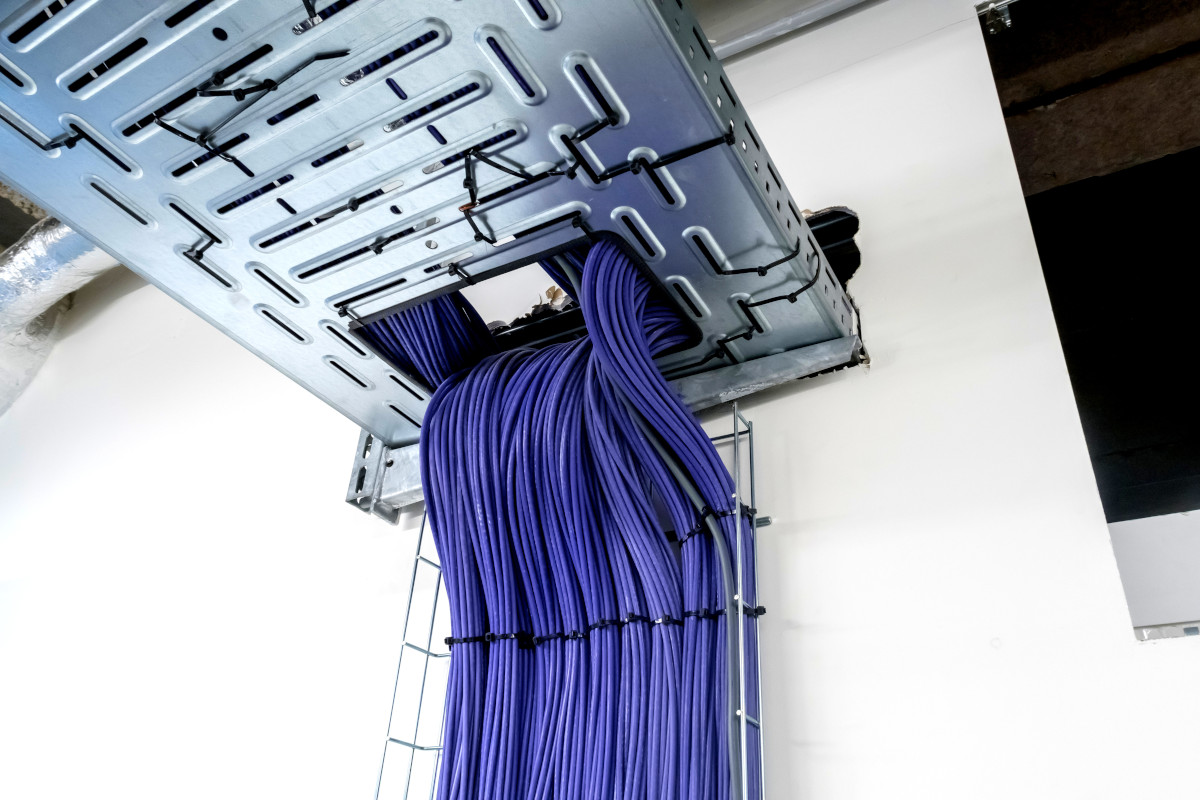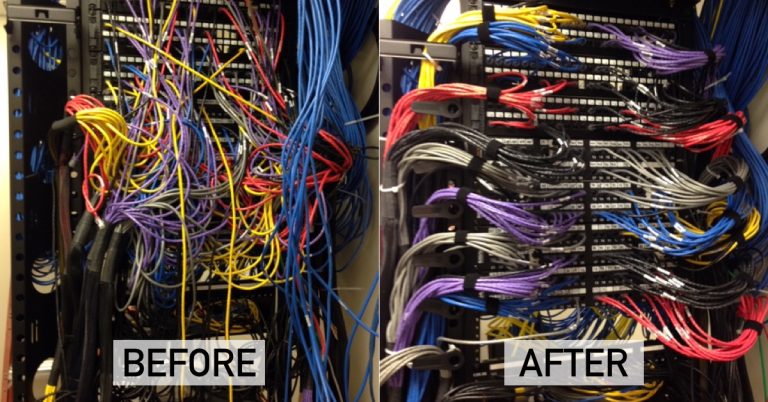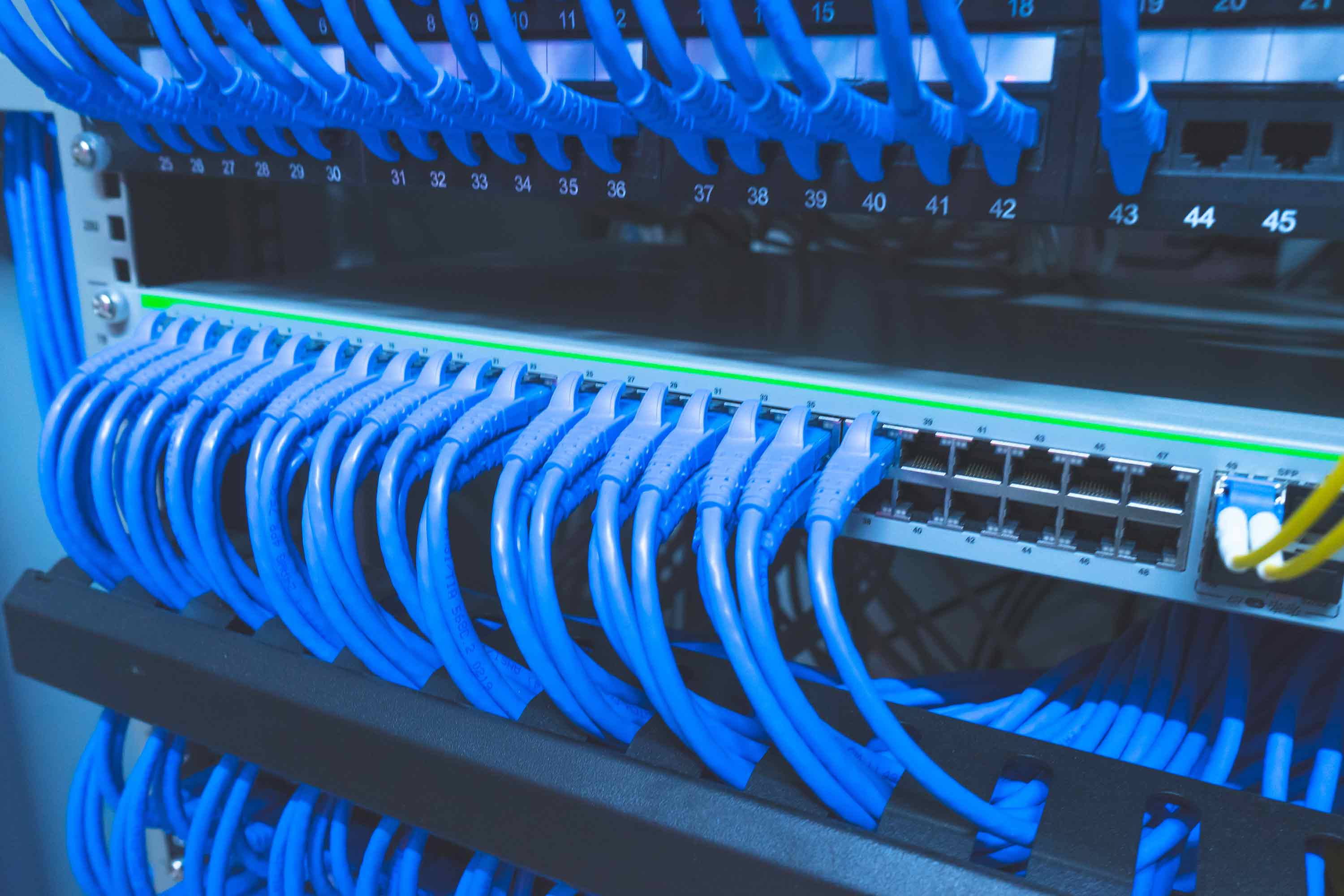Understanding Home Structured Cabling Cabinets

Imagine your home network as a bustling city, with data flowing like traffic on its streets. A home structured cabling cabinet acts as the central hub, organizing and managing this data flow, ensuring everything runs smoothly and efficiently. It’s the heart of your home network, keeping everything connected and running smoothly.
Purpose and Function
Home structured cabling cabinets provide a centralized and organized location for managing all your network cables and devices. They act as a central point for connecting your internet modem, router, network switches, and other devices. This organized approach ensures a clean and efficient network setup, simplifying maintenance and troubleshooting.
Benefits of Using a Structured Cabling Cabinet
- Enhanced Network Performance: By organizing cables and devices, the cabinet reduces clutter and interference, leading to improved network speed and reliability.
- Simplified Network Management: With all your network components in one place, managing and troubleshooting becomes much easier. You can easily identify and access cables, devices, and connections.
- Increased Scalability: A structured cabling cabinet allows for easy expansion of your network. You can add new devices and cables without disrupting existing connections.
- Improved Aesthetics: Instead of messy cables running across your walls, a structured cabling cabinet neatly conceals them, enhancing the appearance of your home.
Types of Home Structured Cabling Cabinets
The type of home structured cabling cabinet you choose depends on your specific needs and budget. Different cabinets offer varying features and capacities.
Basic Cabinets
These cabinets are typically smaller and more affordable, suitable for smaller homes or those with limited networking needs. They offer basic cable management and space for a few devices.
Advanced Cabinets
These cabinets are larger and more feature-rich, designed for larger homes or those with more complex networking requirements. They may include features like built-in surge protection, ventilation, and cable labeling systems.
Wall-Mount Cabinets
These cabinets are designed to be mounted on walls, saving space and offering a discreet solution for cable management. They are ideal for homes with limited floor space.
Rack-Mount Cabinets
These cabinets are designed to hold rack-mountable network equipment, such as servers and switches. They provide secure and organized storage for your network infrastructure.
Selecting the Right Cabinet
When choosing a home structured cabling cabinet, consider the following factors:
- Network Size and Complexity: Determine the number of devices you need to connect and the complexity of your network.
- Cable Capacity: Consider the number of cables you need to manage and the type of connectors you use.
- Space Requirements: Measure the available space where you plan to install the cabinet.
- Budget: Set a realistic budget and consider the features and capacity offered by different cabinets within your price range.
Components and Features of Home Structured Cabling Cabinets

A home structured cabling cabinet serves as the central hub for managing and organizing all your home’s network connections, ensuring efficient and reliable data flow. It’s like the brain of your home network, keeping everything running smoothly. This cabinet houses various components that work together to facilitate seamless connectivity and manage your network infrastructure.
Key Components
These components are essential for the functionality of a home structured cabling cabinet.
- Rack: The foundation of the cabinet, providing a sturdy frame for mounting other components. It’s typically made of metal for durability and comes in various sizes to accommodate different equipment needs. The rack is the backbone, holding everything together.
- Patch Panels: These are the heart of the cabinet, providing a central point for connecting and managing network cables. Patch panels offer a neat and organized way to terminate and connect network cables, allowing for easy troubleshooting and reconfiguration. Imagine them as the connectors that keep your network organized and manageable.
- Cable Organizers: These help maintain order and prevent tangles within the cabinet. Cable organizers can be straps, ties, or clips, providing a clean and efficient way to manage the flow of cables. They’re like the organizers in your closet, keeping your cables neat and tidy.
- Power Distribution Units (PDUs): These units provide power outlets for all the devices mounted within the cabinet. They often feature surge protection and monitoring capabilities, ensuring reliable power supply and device safety. Think of them as the power source, keeping your network devices running smoothly.
- Network Switches: These are essential for connecting multiple devices within a network. Switches allow devices to communicate with each other, facilitating data sharing and network connectivity. They’re like the traffic controllers, directing data flow efficiently.
- Routers: The gateway to the internet, routers connect your home network to the outside world. They handle data traffic between your local network and the internet, providing access to online services and resources. Think of them as the bridge, connecting your home network to the wider world.
Cable Management Solutions
Effective cable management is crucial for maintaining a well-organized and efficient home network.
- Cable Ties: These are simple yet effective for bundling and securing cables, preventing tangles and clutter. They’re like the rubber bands of the network world, keeping cables together and organized.
- Cable Straps: Similar to ties, but offer adjustable tension for a more secure hold. They’re like the more robust organizers, ensuring your cables stay in place.
- Cable Clips: These are designed to attach cables to the cabinet frame, providing a neat and organized way to manage vertical cable runs. Think of them as the little helpers, keeping cables from dangling and getting in the way.
- Cable Management Panels: These offer a dedicated space for organizing cables, often featuring slots and channels for routing and securing cables. They’re like the designated zones for your cables, keeping them neat and tidy.
Ventilation and Cooling, Home structured cabling cabinet
Proper ventilation is essential for preventing overheating within the cabinet, which can impact performance and potentially damage equipment.
- Fans: These provide airflow within the cabinet, dissipating heat generated by network devices. Think of them as the air conditioners, keeping your network cool and running smoothly.
- Vents: These openings on the cabinet allow for natural airflow, facilitating heat dissipation. They’re like the windows of the cabinet, allowing for fresh air to circulate.
Common Features
These features enhance the functionality and usability of a home structured cabling cabinet.
- Patch Panels: These are crucial for managing and organizing network cables. They provide a central point for terminating and connecting cables, offering easy access and flexibility for network changes. They’re like the organizers for your network cables, making them easy to access and manage.
- Cable Organizers: These help maintain order within the cabinet, preventing tangles and clutter. They can be straps, ties, or clips, providing a clean and efficient way to manage the flow of cables. They’re like the tidy keepers of your network, ensuring cables are neatly arranged.
- Power Distribution Units (PDUs): These units provide power outlets for all the devices mounted within the cabinet. They often feature surge protection and monitoring capabilities, ensuring reliable power supply and device safety. Think of them as the power providers, keeping your network devices running smoothly and safely.
Installation and Configuration of Home Structured Cabling Cabinets

Installing a home structured cabling cabinet can seem daunting, but with the right approach, it’s a straightforward process that brings significant benefits. This section will guide you through the steps involved in setting up your cabinet, organizing cables, and connecting your network devices.
Choosing the Right Location
The location of your cabinet is crucial for both convenience and optimal performance.
- Centralized Location: Choose a spot in your home where your network devices are easily accessible and where the cabinet can be centrally located for your network needs.
- Proximity to Network Devices: Ideally, the cabinet should be close to your modem, router, and other network devices to minimize cable lengths and potential signal loss.
- Accessibility: Ensure the cabinet is easily accessible for maintenance and future upgrades.
- Ventilation: Select a well-ventilated area to prevent overheating, especially if you have multiple network devices connected.
Mounting and Securing the Cabinet
Once you’ve chosen the location, it’s time to mount the cabinet.
- Mounting Options: Most cabinets come with mounting hardware and instructions. Choose the appropriate mounting option based on your wall type (drywall, concrete, etc.).
- Leveling: Ensure the cabinet is level before securing it to the wall. This ensures proper cable routing and prevents strain on the cabinet.
- Securing: Follow the manufacturer’s instructions to secure the cabinet to the wall using the provided screws or anchors.
Organizing and Labeling Cables
- Cable Management: Use cable ties, clips, and other accessories to keep cables organized and prevent tangles. This improves airflow within the cabinet and simplifies troubleshooting.
- Labeling: Clearly label each cable using numbered tags or heat-shrink tubing. This makes it easy to identify and trace cables during future maintenance or troubleshooting.
- Cable Routing: Route cables neatly within the cabinet, avoiding sharp bends or kinks. Use cable management accessories to keep cables separated and organized.
Connecting Network Devices
- Connecting the Modem: Connect your modem to the cabinet using a coaxial cable or Ethernet cable, depending on your setup.
- Connecting the Router: Connect your router to the cabinet using an Ethernet cable. Choose the appropriate port based on your network configuration.
- Connecting Other Devices: Connect other network devices, such as switches, access points, or network-attached storage (NAS) devices, to the cabinet using Ethernet cables.
Troubleshooting Common Installation Issues
- Cable Connections: Double-check all cable connections, ensuring they are secure and free of damage. Loose or damaged cables can cause connectivity issues.
- Signal Interference: Ensure there are no metal objects or other sources of electromagnetic interference near the cabinet.
- Cable Lengths: Consider the length of your cables. Long cable runs can result in signal loss. Use high-quality cables and consider using cable extenders or signal boosters if necessary.
Ensuring Optimal Performance
- Regular Maintenance: Clean the cabinet regularly to remove dust and debris that can interfere with signal quality.
- Cable Management: Keep cables organized and avoid overcrowding.
- Ventilation: Ensure the cabinet is well-ventilated to prevent overheating.
A home structured cabling cabinet is essential for managing your home’s network and entertainment systems. It’s like a central hub for all your cables, making it easier to connect and manage everything. While a structured cabling cabinet keeps your technology organized, you might also consider the stylish and functional Kohler bathroom vanity cabinets for a more organized and aesthetically pleasing bathroom space.
A home structured cabling cabinet is a necessity for any modern home, keeping your network organized and efficient. Just like a navy blue china cabinet adds a touch of elegance to your dining room, a structured cabling cabinet offers a sleek and functional solution for your home’s technology needs.
With a well-organized cabinet, you can easily manage your internet connection, entertainment systems, and smart home devices, creating a seamless and enjoyable tech experience.
